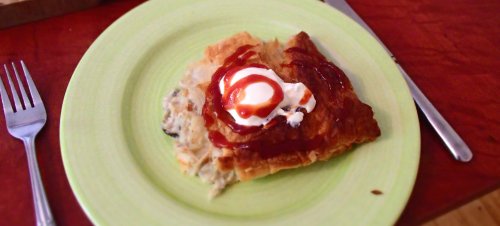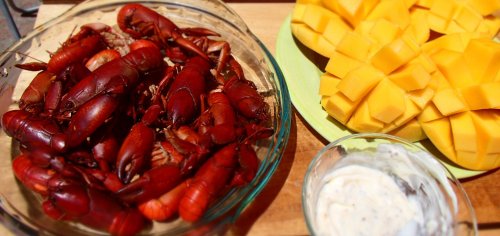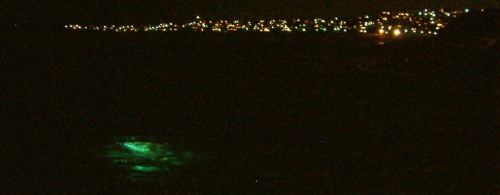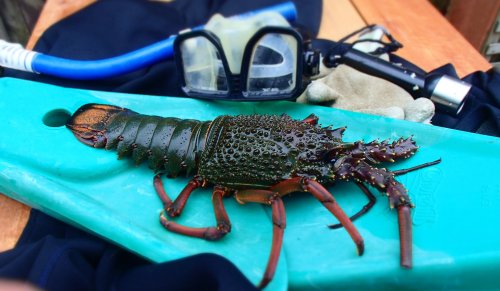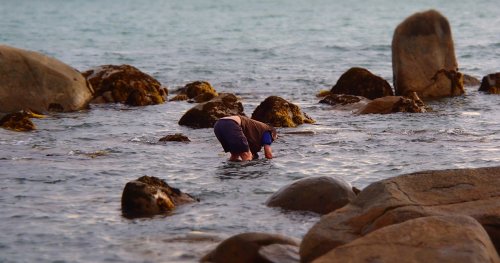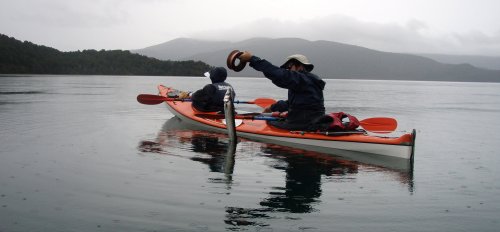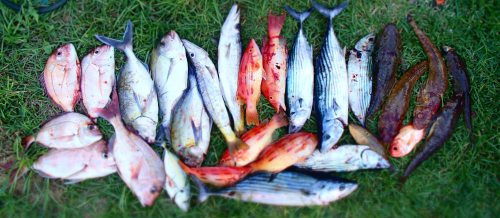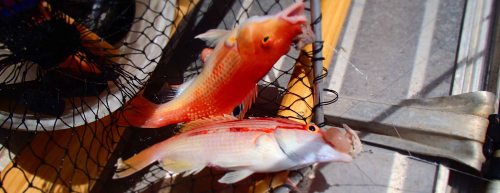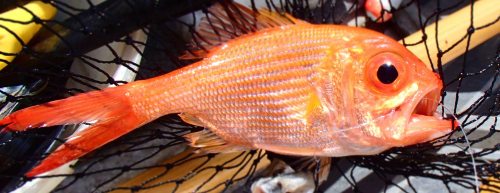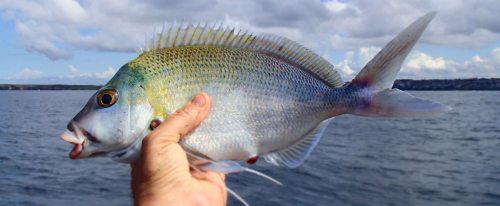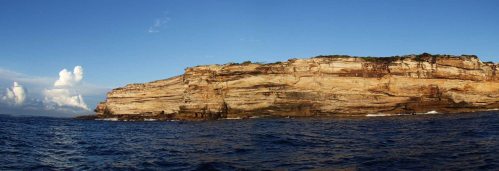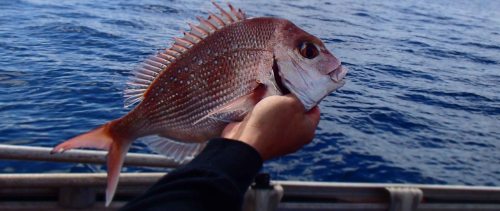It has been a long time off the blog; but finally, as we are gearing up for another Fat of the Land and Sea Week, I really should post the outcome of the original. All in all, a great challenge but a great success too. In part, the success can be credited with a reinvigorated wild and homegrown food passion that dragged my focus to some new collaborations and efforts away from here, but plans to ramp this up are still drifting around in the mix.
At first, I thought that going for a week eating only homegrown and wild food wouldn’t be that hard. But it was. And then it wasn’t, and it wouldn’t be a second time around. I learned a lot.
Day 1
It all started a bit shaky with me failing at my hunt and finding my bees didn’t have any honey to spare. I left our bush block empty-handed except for some quinces – the worst forage for a hungry man as they need a lot of slow cooking to make them edible. Things were looking up with a huge haul of roadside apples, at least 30kg, on the way home. Mostly crabs too tart to eat out of hand, but fine for cooking or cider (it made the lack of honey even more of a shame, because it would have given a boost to either of those options).

The first forage was a load of quinces. We’d decided on starting from scratch on Day 1, which meant that all I had to start on was something that needs a lot of cooking.

Breaking fast with some roadside apples – which are typically very tart and crabby (or worm-ridden if sweet). There was one tree that had some fruit that just worked for eating out of hand, but two tart apples were about all an empty stomach could approach until dinner. There were at least 30kg of these (of which half remain prepped in my freezer for Winter pies and booze).
By the end of the day, things were looking positively rosy when I got back to find others converging on my house with very large amounts of hunted goat, speared fish and a fair bit of foraged and homegrown fruit and veg. A quick hit on our garden and we got busy dividing up so we could all go off with a few days survival secured. In celebration, I feasted on fish and stewed pears; and, because it was one of my two exceptions along with olive oil, I drank wine.
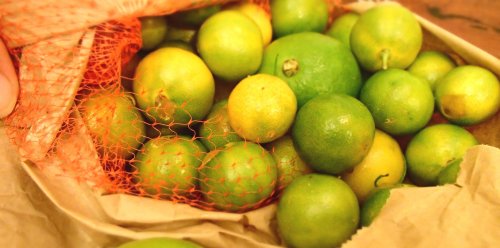
Calamondins brought to the day 1 food-share. In my view, citrus is among food’s ‘critical infrastructure’, but very few are fruiting in Autumn, so these tart little kumquat-like babies were a godsend.
Day 2
Day 2 started badly and got little better. Through what I assume was a virus helped along by combination of exhaustion, being underfed and drinking too much wine, I was practically bed-ridden. I had been up in the night vomiting stewed pears and fish. All I know is that it wasn’t the food – it is not that often that 7 other people are signed on to eating the exact same stuff as you, and they were were all fine. I awoke with no options other than stewed pears and fish as a ready-to-eat meal and couldn’t face either. What’s more I was faced with the prospect of cleaning a very sizeable haul of fish and getting it in the freezer before it went off. That did not go well. If you have never gutted a surgeonfish, which I hadn’t, do not do it on a weak stomach. While the flesh is reputedly perfectly palatable, the gutting is disgusting. It was more of a tainted retch than a full vomit I’d have to say, but with that, I had no real desire to eat any fish at all. Things stayed that way for the rest of the week – I forced down one piece of kingfish ceviche on day 7, but that was it. This was unfortunate, given that there was lot of fish in my freezer.

Halfway through fish cleaning; normally something I enjoy, but not when wracked by nausea and when surgeonfish (not pictured) are involved.
Day 3
Day 3 found me still in pretty bad shape. I had slept 13 hours, but still felt like more. Or some caffeine. With milk in it. With cheese and butter also off the table, I realised how much I like dairy. There was also another forager down with a virus or something. I wasn’t the only one struggling. And another who had to cancel his fishing trip for the day because I was too ill to take to the waves. I’d managed to get a rabbit, some goat and half a roadkill wood duck in the slow cooker the night before and I managed to dig up and clean a kilo or two of edible canna (Queensland arrowroot) in the morning; it joined the meat with some herbs and I figured I had dinner for four – including the man down.

Day 1 had brought in some hunted goat and (of all things) a roadkill wood duck, and the Day 2 hunting party came through with rabbit. Food was clearly not lacking in either quality or quantity, there was just a bit of lifestyle habit and illness to shift before it could become easy.

A harvest of Queensland arrowroot for carbs (supplemented cursorily with some sorghum and maize that had seeded from chook food when their bedding is re-used as fertile mulch) and the stew became hearty as well as fancy.

This was probably the first meal after I had properly embraced the FOTLAS idea properly – a delicious mixed game stew with garden starchy bits, parsley, chilli and Thai basil.
I delivered some stew to a couple of others en route to trade some fish for some bunya nuts. A mate was house-sitting an empty mansion with a bunya pine in it and just happened to send an email expressing his surprise at the size of the pinecones that were falling. Great big bombs laden with carbs – just what we were after! Things were looking up again. But we had lost one forager to the temptation of boardroom catering – and then there were seven.

Bunya nuts in abundance, the famed feast food of the Bundjalung people. From this point on (about halfway) it became clear that hunger would only be a consequence of not finding the time to do the huge of amount of processing involved with a lot of wild food.
Day 4
I discovered bunya nuts. I had tried them before on a trip where we gathered some from a park in Wellington (NSW) en route to a few weeks in the bush, back before the internet was on phones, and worked out that they are not quite right uncooked, hard as rock overcooked and delicious when done just right. A tricky feat for novices with only a campfire to work with. Now with online suggestion and fancy new oven, we nailed it – 25 minutes at 200 degrees C. Figuring pine nuts were a pesto ingredient and with plentiful basil, pasta pesto was reinvented with a basil sauce over roast bunya nuts playing the part of gnocchi. I was back in good health and back on track.
Day 5
I was loving it! After doing the school run, I popped by the sea and had a dive for sea snails, picked up some sea lettuce and returned home. I set them aside (to become sous vide tenderised nuggets on skewers at the final feast) and replaced them with someone’s abalone from the previous weekend and some bunya nuts done with my favourite Thai combo of chilli and Thai basil (plus sea lettuce). Another forager had traded with a neighbour for some hunted venison – I took the time to give a backstrap fillet 8 hours sous vide with oil and a lot of herbs and had my first crack at ‘forager’s bread’. It was a recipe that I was later unable to recreate; a sheer luck combo of boiled Queensland arrowroot, leached acorns and bunyas, blended, flattened into rounds in a tortilla press and pan-fried (I’ve lost the picture and don’t know how to get it off Instagram, but it’s here). With tender venison in a perfect nutty flatbread following the abalone and chilli basil bunyas, I wasn’t just subsisting by the end of the day but laying a happy head down after two of my finest meals in memory.
Day 6
Having dug up a rather meagre harvest of kumara in the shady, sandy side garden on Day 1, I got around to snooping underground in the sunny front bed. 10kg of tubers came up easily from just a quarter of the bed. A pang of guilt that some others would have liked to know about this bonanza earlier was assuaged by knowing that the offer to come digging had been declined by all. I lunched on chilli basil super stew of rabbit, venison, goat, duck, bunya, arrowroot and roadside pears. Dinner came as huge roast kumara with bunya pesto (using native spinach, rocket and amaranth with the basil) topped with chilli and chives. For the first time of the week I was actually stuffed at the end of the day.
Day 7
Feast day. Up at 7 am to start the coals and rig up a whole goat on a spit on top of them, 3 kilos of kumara stitched up inside it. I try, unsuccessfully, to recreate the pliable forager’s flatbread, but nonetheless get some fried flatbread through with the help of the Squeeze. Fish arrives in perfect order – freshly speared kingfish. Home-made wine, shop-bought beer, vodka with foraged mint / lemon myrtle / stevia syrup and we settle into celebrating our success and laughing over the struggles.

Most of the Fat of the Land and Sea Week crew – a finer bunch of fishers, foragers, hunters and growers may never have assembled! (photo credit: @mostlyfish)
Fat of the Land and Sea Week Spring is coming!
Plans are now confirmed for Fat of the Land and Sea Week Spring 2015. Sunday 11 – Saturday 17 October. To make it more accessible, especially for people with limited wild and homegrown resources or limited time while still working through the week full-time, we’ll be tweaking the rules. In some form or other, pretty much anyone can get involved. Dates to be confirmed, but we welcome anyone and everyone to come aboard.
FOTLAS 2015 Rules:
- Wild and homegrown food every day for a week. This may be that something is wild or homegrown every day or in every meal or, at the full-on end of the spectrum, that everything is.
- You can nominate some specific ingredients as exceptions. As many as you like for whatever reason. This would usually be things that are central to your cooking (olive oil, some seasonings), personal health regime (yoghurt, turmeric, oat bran, your weird kale-based kombucha, whatever), small pleasures in life (coffee, wine, chocolate) or a staple to keep you from starving (rice, potatoes, bread) while you make the challenge about what goes with it.
- You may require of yourself that it is all gathered within the week or you may allow yourself to get a start stockpiling some wild and home-grown food beforehand. That might be just the previous Saturday or that you start stocking the larder and freezer now (I’ll be allowing larder use so I can keep a better handle on the day job).
- Trading, gifting and generally doing the week in collaboration with friends or strangers is encouraged. It is a week to celebrate and a week to make you think about your own personal engagement with food and your place in a food network. Making it local means people can do things like drop in for something someone else has lots of (like fish or greens) midweek or make a dish and drop it around to others.
- It runs from a Sunday to a Saturday; and on that Saturday, there should be a feast!















